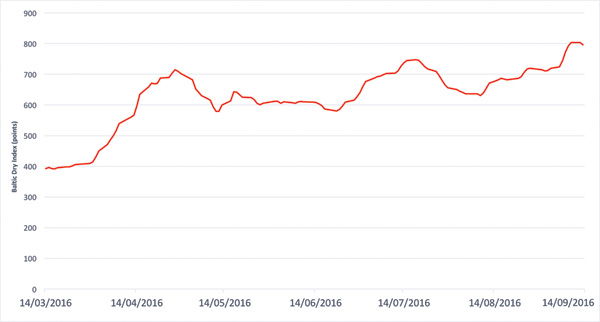Over the past six months, the Baltic Dry Index (BDI) has witnessed conservative growth. Despite a period of decline, the BDI has steadily climbed from 392 in March to 804 in the first two weeks of September.
This 412-point growth may be a sign that the demand-supply equilibrium in the dry bulk market is headed for continued improvement by the close of 2016. It was noted by Golden Ocean Group Ltd, a Norwegian shipping company, that newbuild deliveries have fallen short in comparison to the official order book. Simultaneously demand for dry bulk commodities has exceeded expectations.
According to Golden Ocean, “Rates in the second quarter increased from the historic lows observed in the first quarter and while there were periods of careful optimism the average rates for the quarter ended at levels comparable to operating expenses. During April the Capesize index moved from approximately US$1000/day at the start of the month to a peak of approximately US$8000/day at the end of the month.”
In terms of net fleet growth, various analysts have predicted an increase of 1-2 per cent. However, when broken down by ship size, Capesize has a projected growth of zero per cent, Panamax of two per cent and Supermax of eight per cent. Average utilisisation rates have increased from 78 per cent in 1Q16 to just over 80 per cent in 2Q16.

